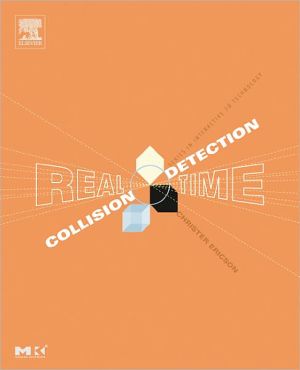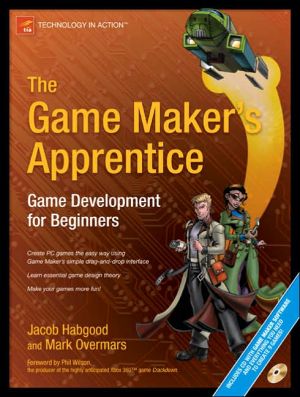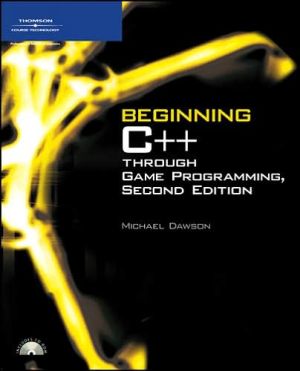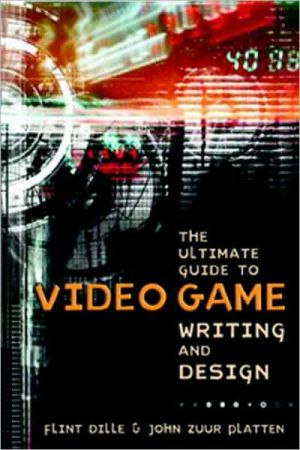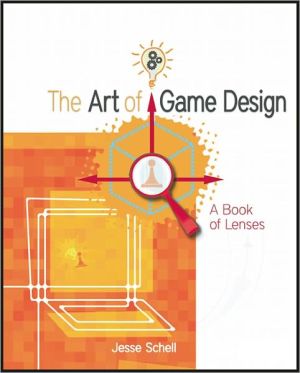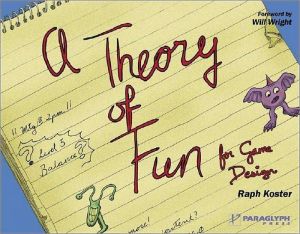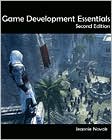Real-Time Collision Detection
Written by an expert in the game industry, Christer Ericson's new book is a comprehensive guide to the components of efficient real-time collision detection systems. The book provides the tools and know-how needed to implement industrial-strength collision detection for the highly detailed dynamic environments of applications such as 3D games, virtual reality applications, and physical simulators.\ Of the many topics covered, a key focus is on spatial and object partitioning through a wide...
Search in google:
Written by an expert in the game industry, Christer Ericson's new book is a comprehensive guide to the components of efficient real-time collision detection systems. The book provides the tools and know-how needed to implement industrial-strength collision detection for the highly detailed dynamic environments of applications such as 3D games, virtual reality applications, and physical simulators.Of the many topics covered, a key focus is on spatial and object partitioning through a wide variety of grids, trees, and sorting methods. The author also presents a large collection of intersection and distance tests for both simple and complex geometric shapes. Sections on vector and matrix algebra provide the background for advanced topics such as Voronoi regions, Minkowski sums, and linear and quadratic programming.Of utmost importance to programmers but rarely discussed in this much detail in other books are the chapters covering numerical and geometric robustness, both essential topics for collision detection systems. Also unique are the chapters discussing how graphics hardware can assist in collision detection computations and on advanced optimization for modern computer architectures. All in all, this comprehensive book will become the industry standard for years to come.Features*Presents algorithms and data structures with wide applications to the fields of game development, virtual reality, physically based simulation, CAD/CAM, architectural and scientific visualization, molecular modeling, engineering simulation, GIS, ray tracing, and more.*Describes tested, real-world methods, liberally illustrated by C & C++ code.*Reviews necessary concepts from mathematics and computational geometry, and includes extensive references to other sources and research literature.
Ch. 1Introduction1Ch. 2Collision detection design issues7Ch. 3A math and geometry primer23Ch. 4Bounding volumes75Ch. 5Basic primitive tests125Ch. 6Bounding volume hierarchies235Ch. 7Spatial partitioning285Ch. 8BSP tree hierarchies349Ch. 9Convexity-based methods383Ch. 10GPU-assisted collision detection413Ch. 11Numerical robustness427Ch. 12Geometrical robustness465Ch. 13Optimization511
\ From the Publisher"Accurate and efficient collision detection in complex environments is one of the foundations of today's cutting-edge computer games. Yet collision detection is notoriously difficult to implement robustly and takes up an increasingly large fraction of compute cycles in current game engines as increasingly detailed environments are becoming the norm. Real-time Collision Detection is a comprehensive reference on this topic, covering it with both breadth and depth. Not only are the fundamental algorithms explained clearly and in detail, but Ericson's book covers crucial implementation issues, including geometric and numeric robustness and cache-efficient implementations of the algorithms. Together, these make this book a 'must have' practical reference for anyone interested in developing interactive applications with complex environments." -Matt Pharr, NVIDIA\ \ "Christer Ericson's Real-time Collision Detection is an excellent resource that covers the fundamentals as well as a broad array of techniques applicable to game development." -Jay Stelly, Valve\ \ "Christer Ericson provides a practical and very accessible treatment of real-time collision detection. This includes a comprehensive set of C++ implementations of a very large number of routines necessary to build such applications in a context which is much broader than just game programming. The programs are well-thought out and the accompanying discussion reveals a deep understanding of the graphics, algorithms, and ease of implementation issues. It will find a welcome home on any graphics programmer's bookshelf although it will most likely not stay there long as others will be constantly borrowing it...." -Hanan Samet, University of Maryland\ \ \ "Real-Time Collision Detection is an excellent resource that every serious engine programmer should have on his bookshelf. Christer Ericson covers an impressive range of techniques and presents them using concise mathematics, insightful figures, and practical code." -Eric Lengyel, Senior Programmer, Naughty Dog\ \ \ "If you think you already know everything about collision detection, you're in for a surprise! This book not only does an excellent job at presenting all the collision detection methods known to date, it also goes way beyond the standard material thanks to a plethora of juicy, down-to-earth, hard-learned implementation tips and tricks. This produces a perfect blend between theory and practice, illustrated by the right amount of source code in appropriate places. Basically the book just oozes with experience. Christer doesn't forget all the alternative topics that, despite not directly related to collision detection, can ruin your implementation if you don't include them in your design. The chapters on robustness and optimization are priceless in this respect. Its carefully crafted compact kd-tree implementation beautifully concludes a unique book full of luminous gems." -Pierre Terdiman, principal software engineer, NovodeX AG, and writer of the popular collision detection library Opcode\ \ \ "When I received a copy of Real-Time Collision Detection for review, I was in the midst of redesigning an architectural visualization and lighting design program. The Bounding Volume Hierarchies chapter allowed me to quickly and easily design and implement an efficient ray tracing acceleration scheme. It also provided me with a wealth of information on various design strategies, which gave me the confidence that I had chosen a near-optimal approach. What one of my clients recently said about the finished software reflects my opinion of this fantastic book: 'Holy cow! Excellent work!'" -Ian Ashdown, byHeart Consultants Limited\ \
